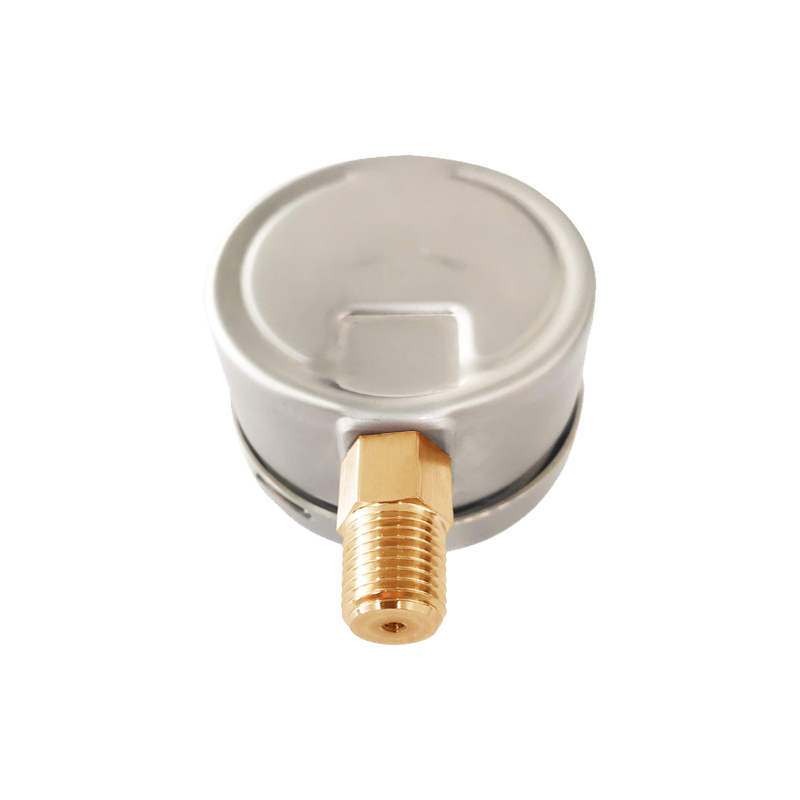
Dez . 12, 2024 00:06 Back to list
span differential pressure gauge
Understanding Span Differential Pressure Gauges
In various industrial processes, the measurement of pressure differences plays a crucial role in ensuring optimal performance and safety. One of the key instruments used for this purpose is the span differential pressure gauge. This article will explore the function, application, advantages, and aspects of maintenance concerning these essential instruments.
What is a Span Differential Pressure Gauge?
A span differential pressure gauge measures the difference in pressure between two points within a system. Typically, it consists of two pressure ports—one connected to the higher pressure source and the other to the lower pressure source. The gauge calculates the differential pressure (DP) by subtracting the lower pressure reading from the upper pressure reading. The term span refers to the range of pressures that the gauge can measure accurately, which is critical for various applications across industries like oil and gas, water treatment, HVAC systems, and manufacturing processes.
Applications of Span Differential Pressure Gauges
Span differential pressure gauges are utilized in numerous applications. One primary use is monitoring fluid flow through filters or orifices, where the pressure difference indicates the flow rate. As the filter becomes clogged, the differential pressure will rise, signaling the need for maintenance or replacement. This application is crucial in industries that rely on clean water or clean air, as well as in gas applications where impurities can damage equipment.
Another common application is in level measurement. In tanks, differential pressure gauges can measure the height of the liquid by assessing the pressure exerted by the liquid column. This method is reliable and can be applied to corrosive or viscous fluids that are challenging to measure with traditional float-type systems.
span differential pressure gauge

Moreover, span differential pressure gauges are pivotal in monitoring process variables in chemical plants. They help ensure that systems operate within permissible limits, allowing for proactive maintenance and preventing potential failures.
Advantages of Using Span Differential Pressure Gauges
One of the key advantages of span differential pressure gauges is their accuracy and reliability. They can provide precise measurements under various conditions, which is vital for maintaining the efficiency of industrial processes. Furthermore, their robust design allows them to operate in harsh environments, such as extreme temperatures and corrosive atmospheres, making them versatile instruments applicable in numerous settings.
Moreover, these gauges require minimal maintenance, as they have few moving parts. When properly calibrated, they can provide consistent readings over extended periods, reducing downtime and operational costs. Integrating these gauges with automated systems further enhances monitoring capabilities, promoting real-time data analysis and effective decision-making.
Maintenance and Calibration
While span differential pressure gauges are generally low-maintenance, periodic checks are essential to ensure their accuracy and performance. Calibration is crucial, typically performed annually or according to the specific requirements of the application. This process involves comparing the gauge's readings to a known standard and making necessary adjustments. Regular maintenance also includes cleaning the pressure ports and checking for leaks, which helps prolong the life of the instrument.
In conclusion, span differential pressure gauges are vital instruments used in various industries for measuring pressure differences with accuracy and reliability. Their applications range from monitoring flow rates and tank levels to ensuring the overall efficiency of chemical processes. With their numerous advantages, including durability and low maintenance requirements, these gauges are indispensable tools for any industry that prioritizes operational efficiency and safety. Proper maintenance and calibration of these instruments further enhance their reliability, making them an essential component of effective process management.
-
High-Precision 5 Valve Manifold Differential Pressure Gauge Suppliers
NewsApr.29,2025
-
High-Precision Diaphragm Vacuum Pressure Gauges Manufacturers & Quotes
NewsApr.29,2025
-
Omega Differential Pressure Gauges High Accuracy & Durability
NewsApr.28,2025
-
Low Pressure Differential Pressure Gauges Precision Solutions & Quotes
NewsApr.28,2025
-
Digital Diaphragm Pressure Gaauge Precision Measurement & OEM Quotes
NewsApr.28,2025
-
Differential Pressure Gauge China Price High-Accuracy & Best Quotes
NewsApr.28,2025
